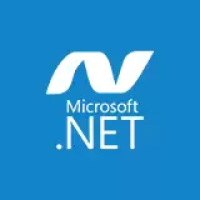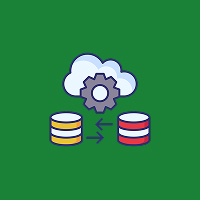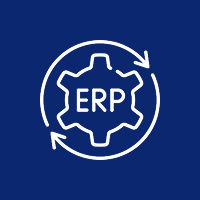In today’s fast-changing tech landscape, cloud-native development is essential for businesses to scale rapidly and efficiently. With the combined power of.NET and Microsoft Azure, developers can create strong, scalable, and secure applications that truly take advantage of the full potential of the cloud. In this blog, we will explore how.NET and Azure work seamlessly together to simplify cloud-native development and highlight best practices to pave your way to success in your cloud journey.
What are cloud-native applications?
Cloud-native applications are designed to thrive in cloud environments. Unlike traditional applications, these use a microservices architecture that make them highly scalable, flexible, and easier to manage. In general, cloud-native applications run in containers, with managed services, and are deployed over cloud platforms such as Azure. Developing cloud-native applications through.NET enables you to build modern applications that intuitively adapt to changes within your business environment while enjoying optimal performance and management.
Why.NET for Cloud-Native Development?
The.NET framework is the best versatile and powerful frame that supports high-performance applications running on various platforms. Along with Azure, this would bring many key advantages for you:
- Cross-Platform:
- With.NET you may build an application capable of running on Windows, Linux, and macOS. Cross-platform capabilities enable your cloud-native applications to function flexibly within several cloud environments.
- Seamless integration with Azure Services: The list of tools and services available from Azure that easily integrate into.NET include Azure Kubernetes Service (AKS), Azure Functions, and Azure DevOps. This makes it easier to deploy and scale.
- Microservices and Containers:.NET is particularly well-suited for a microservices architecture, which is at the heart of cloud-native development. Using.NET Core along with Azure, you deploy microservices in containers with Docker and manage them through Kubernetes.
- Built-in Security and Compliance: Enterprise-grade security and compliance features are offered by Azure that integrate perfectly with your.NET applications for data privacy and security across the cloud.
Best Practices for Developing Cloud-Native Applications with.NET and Azure
1. Use Microservices Architecture
At the core of cloud-native development is a microservices architecture, which divides your application into smaller, independent services. With.NET, you can build each service separately and deploy them in containers on Azure. This allows every microservice to scale independently and will improve performance and reliability. By allowing services to grow at their own pace, you increase flexibility, which makes your application more efficient and better equipped to handle varying demands.
2. Azure Kubernetes Service (AKS)
AKS greatly simplifies the process involved in deploying, managing and scaling containerized applications. Leverage AKS using.NET to orchestrate your microservices quite efficiently. With automatic scaling by traffic needs, you don’t have to worry about managing container capacity manually anymore. This reduces the infrastructure complexity while streamlining performance in your application, and you are free to take time to deliver value rather than dealing with the intricacies of infrastructure.
3. Utilize Serverless Computing with Azure Functions
Implement serverless computing, Azure Functions for parts of your cloud-native application. Serverless computing does not require you to provision and manage servers because it has auto scaling with demand. Further, Azure Functions integrates seamlessly with the platform to allow for smooth events handling in.NET. As much as you will need to write code, writing this code will be seen more by Azure, the infrastructure. This will leave your application flexible and more efficient as it grows.
4. Continuous Integration and Delivery (CI/CD)
You should have a CI/CD pipeline streamline your development. You will have an arsenal of tools through Azure DevOps, which seamlessly integrates with.NET and accelerates builds, tests, and deployments. This will mean your application is always ready for a go-live, and you can implement updates pretty fast with minimal downtime. You will work more on product improvements because you know that the deployment process will not be a problem.
5. Monitor and Optimise with Azure Application Insights
Azure Application Insights is one of the most important monitoring tools that you can have keeping track of your cloud-native application’s performance and availability. With great functionality like this, you would easily derive insights from behavior in your app and will start detecting potential issues well before they become catastrophic problems. It also allows the overall performance to be heightened by solving the problem right before it becomes a more catastrophic problem.
Since it integrates pretty smoothly with.NET applications, you can diagnose some of the problems in real time and take proactive measures, and your application will continue to run smoothly and as efficient as possible.
Getting Started with.NET and Azure
It is not that complicated to get started with cloud-native development using.NET and Azure:
- Setting Up an Azure Account: You have a choice to either register your new account or use one, if you already exist.
Azure provides free tiering which will get you up and experimenting in cloud-native development. One could download it directly from official.NET. - Use Visual Studio: Another excellent IDE for.NET is Visual Studio and Visual Studio Code. They also work quite well with Azure, so the deployment is pretty straightforward.
- Containerize Your Application: Use Docker to containerize your.NET application so that it can run consistently across different environments.
- Deploy to Azure: Once your application is ready, deploy it to Azure using services like Azure Kubernetes Service (AKS) or Azure App Service for easy scaling and management.
Conclusion
This would open the doors to limitless possibilities in developing modern, scalable, and high-performance applications with.NET and Azure. Actively utilizing microservices, containers, and serverless computing gives you the opportunity to use powerful infrastructure on Azure to build cloud-native solutions that can scale as your business expands. Both fresh starts and transitions of an existing application to the cloud are possible; in either case, the combination of.NET and Azure provides everything needed to thrive in the cloud era.













 Database Development
Database Development












































